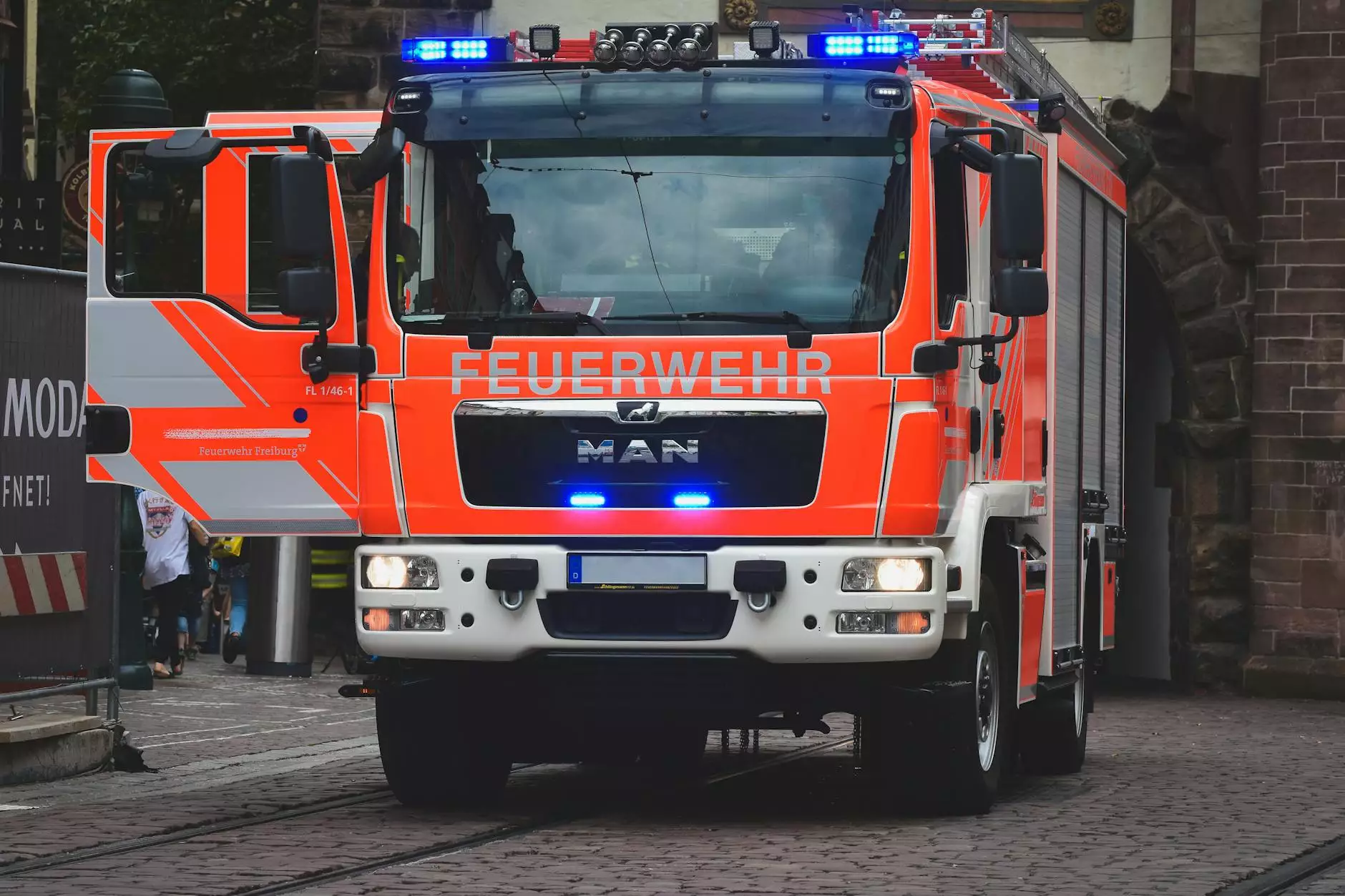Fireground Communications: Enhancing Efficiency in Emergency Response

In the fast-paced world of emergency response, the importance of effective communication cannot be overstated. Whether it’s the police, firefighters, or emergency medical services, the ability to relay information quickly and accurately is crucial to saving lives and property. In this comprehensive article, we delve into the realm of fireground communications and explore how advancements in telecommunications can significantly enhance the efficacy of emergency operations.
Understanding Fireground Communications
Fireground communications refer to the systems and protocols employed by firefighters and other emergency personnel to share vital information during incidents. As technology evolves, so too does the capacity for first responders to communicate in real-time, leading to more informed decision-making and improved operational outcomes.
Importance of Effective Communication in Emergency Services
Effective communication in emergency services serves several key functions:
- Coordination: Ensures that all team members are aware of their roles and responsibilities.
- Situational Awareness: Provides accurate data regarding the situation at hand, enabling timely responses.
- Resource Allocation: Helps in efficiently allocating resources and personnel to areas of need.
- Public Safety: Enhances public safety by ensuring accurate information is disseminated to civilians.
Key Components of Fireground Communications Systems
Modern fireground communications systems are built upon several essential components that work in concert to ensure the success of emergency responses:
1. Radio Communication Systems
Radio systems are the backbone of fireground communications. They help maintain contact between various units and command centers. The evolution from analog to digital radios has improved clarity and reduced interference, allowing for clearer communication among teams.
2. Mobile Data Terminals (MDTs)
MDTs provide first responders with real-time data on incident types, locations, and resources. These terminals enhance situational awareness and allow for the prompt dissemination of critical information. This technology has transformed how fire departments interact with data and streamline operations.
3. Incident Command Systems (ICS)
The ICS framework provides a systematic approach to the command and coordination of incident responses. Effective communications are a crucial piece of the ICS, enabling quick decision-making and action in high-pressure situations.
4. Interoperability Solutions
Diverse agencies often need to work together during large-scale incidents. Interoperability solutions facilitate communication across different technological platforms, ensuring that all entities can collaborate effectively, regardless of their individual systems.
The Role of Telecommunications in Fireground Communications
The telecommunications industry plays a foundational role in enhancing fireground communications:
Integration of Advanced Technologies
Telecommunications companies are constantly innovating, providing cutting-edge solutions such as:
- 5G Networks: Speed and low latency optimize the transfer of data, improving communication and operations.
- Cloud Services: Ensures that all data can be accessed and shared in real time among different agencies and units.
- AI and Machine Learning: Analyzing communication patterns to improve response efficiency and outcomes.
Support for Remote Communication
In rural or remote areas, traditional communication infrastructures may be lacking. Telecommunications companies have the ability to set up temporary communication setups in these regions, ensuring that fireground communications are not impeded, regardless of the geographical landscape.
Benefits of Enhanced Fireground Communications
Investment in enhanced fireground communications translates into significant benefits, including:
1. Increased Safety
Improved communication leads directly to increased safety for first responders. With accurate information, personnel can make informed decisions that keep them safe while they perform their duties.
2. Faster Response Times
Swift and effective fireground communications can lead to quicker deployment of resources. The sooner responders can assess a situation, the quicker they can act. This speed is often the difference between minor incidents and catastrophic ones.
3. Improved Decision Making
Access to real-time data and situational awareness allows managers and commanders to make better strategic decisions, directly improving operational efficiency. These decisions can involve the best tactics to employ or how best to allocate resources based on data collected from the field.
4. Cost Efficiency
Efficient communication reduces waste, ensuring that resources are not squandered. Over time, this leads to savings for fire departments, allowing them to allocate funds towards other critical areas, such as advanced training or equipment.
Challenges to Effective Fireground Communications
While the advancements in fireground communications are promising, several challenges remain:
1. Infrastructure Limitations
Many areas, especially rural ones, still lack the necessary telecommunications infrastructure to support advanced communication technologies fully. Bridging this gap is essential to ensure that all fire departments have access to the same level of communication capabilities.
2. Training and Adoption
Even with advanced systems, if personnel aren't adequately trained to use them, their effectiveness is diminished. Ongoing training and education for emergency responders are vital for maximizing the potential of fireground communications systems.
3. Budget Constraints
Many fire departments operate under tight budgets, which can hinder the adoption of modern technologies. Advocacy for public funding and resources is crucial for enabling the necessary upgrades to systems and equipment.
The Future of Fireground Communications
As technology continues to evolve, so too will the possibilities for fireground communications. Here are some futuristic trends to look out for:
1. Enhanced AI Integration
AI will play an increasingly vital role in analyzing data and predicting incidents. This capability can optimize resource allocation based on predictive models, enhancing organizational response strategies.
2. Wearable Technologies
Wearable communication devices will further streamline information dissemination among first responders. These technologies can provide real-time updates directly to personnel in the field, enhancing situational awareness.
3. Drones
Incorporating drones into fireground communications can provide aerial perspectives of incidents while relaying communications back to command centers. This capability can give first responders an advantage when assessing large-scale incidents.
Conclusion
The realm of fireground communications is crucial for the effective operation of emergency services. By understanding its importance and embracing the technological advancements within telecommunications, emergency personnel can dramatically enhance their operational efficiency. Continued investment in these areas is vital for ensuring public safety and improving response to emergencies. As we look to the future, ongoing education, technological innovation, and collaboration among agencies will be key to overcoming the challenges faced and maximizing the potential benefits of enhanced communication systems in emergency management.









